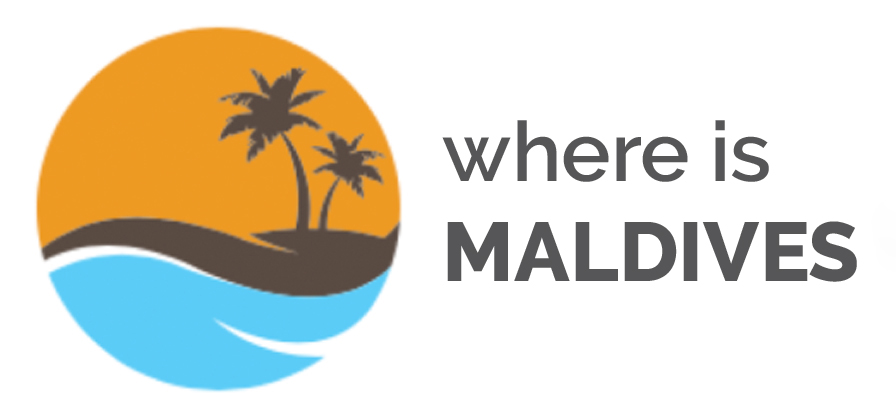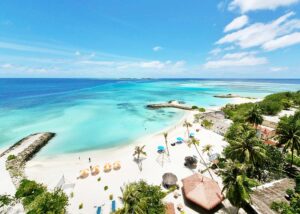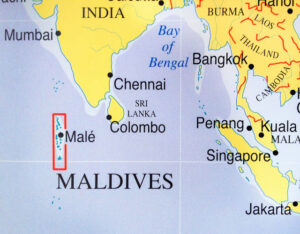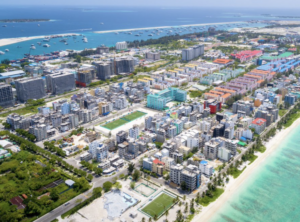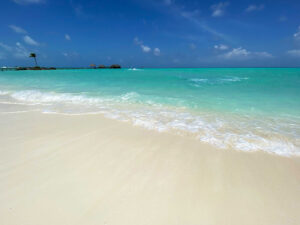Ancient History
Human habitation on the Maldives can be traced back to more than 2500 years and contemporary research shows that the earliest settlers were Aryan Immigrants.
Conversion to Islam
Before the conversion of the people of the Maldives to Islam in the 12th century AD, Maldives was a Buddhist country that practiced either the Theravada, Vajrayana or Mahayana traditions of Buddhism. There are indications in the remains of Buddhist temples found on many islands suggestive of these traditions having been practiced on the islands and the issue of which was predominant remains uncertain to modern scholarship.Though a patriarchal society for centuries now, early accounts from travelers who sailed to these ancient isles suggest that the Maldives was governed by a queen and also provide that the local men were responsible only for military defense and that women held higher social status in general with upper class women having several male servants to do their bidding.
Kingdom to a Republic
The ancient sultanate of the Maldives lasted for 853 years up to the 1950s when there was a brief formation of a Republic and a reversion to the sultanate by popular demand, finally ending on 11th November 1968 when a referendum established the second republic that exists to date.Throughout the history of the sultanate there were feuds between the royal houses for the “singa sana” or the lion throne. The sultans had absolute power over their subjects and maintained the sovereignty of the Maldives except for three instances that threatened it. The Portuguese empire is said to have occupied the Maldives in the 15th century for 15 years although later sources contest that the Maldives might not have been officially a Portuguese colony but dominated by Portuguese pirates who found an unarmed medieval kingdom an easy target. This was followed by a Dutch (Malabar) Occupation in the 17th century of four months. Finally, the Maldives became a British protectorate in 1887 when the sultan signed an agreement with the Governor of Ceylon handing over foreign and defense policy to the British empire while maintaining internal self government. The power of the sultan declined from the late 19th century onwards when the office of the prime minister became more influential which ultimately resulted in the formation of the first constitution of the Maldives in 1932 by Sultan Mohamed Shamsudeen III.
The Second Republic and Beyond
The short lived first republic was declared by President Mohamed Amin Didi in 1953 and lasted a few months before he was deposed by a violent mob of disenfranchised locals for his unpopular policies and reform agenda. This was followed by a reversion to the sultanate with the coronation of Sultan Mohamed Fareed Didi who’s reign lasted till 1968 when President Ibrahim Nasir established the second republic through a referendum. President Ibrahim Nasir though criticized for his autocratic rule oversaw a period of unprecedented modernization with the introduction of tourism, widespread education in the English medium and the building of the first Maldivian airport. He is also widely credited for gaining independence from the British in 26th July 1965 while he was prime minister under Sultan Mohamed Fareed Didi. The presidency of Ibrahim Nasir came to an end when popular discontent with his autocratic regime peaked in 1978 paving the way for President Maumoon Abdul Gayyoom to win the elections.President Gayyoom stayed in office for 30 years winning six consecutive elections and surviving three coup attempts with the last one in 1988 fully materializing into a gunfight on the streets of Male’. He was also criticized for his autocratic rule but economic growth continued under his rule and living standards increased significantly from when he took office. Hence he still has a considerable support base throughout the country.
First Multi-Party Elections
The regime of President Gayyoom came to an end in 2008 when Mohamed Nasheed a human rights activist and journalist rallied popular support by forming the Maldivian Democratic Party and called for the first multiparty elections in the Maldives which Mohamed Nasheed won. However, President Mohamed Nasheed’s regime was short lived since he resigned three years into his term alleging a coup de’ tat which was followed by his vice president Mohamed Waheed Hassan Manik assuming the presidency for the remainder of his term. Mohamed Nasheed contested the 2013 elections and lost by a narrow margin to Abdullah Yamin Abdul Gayyoom, half brother of the former president who is now the incumbent president of the Maldives.
